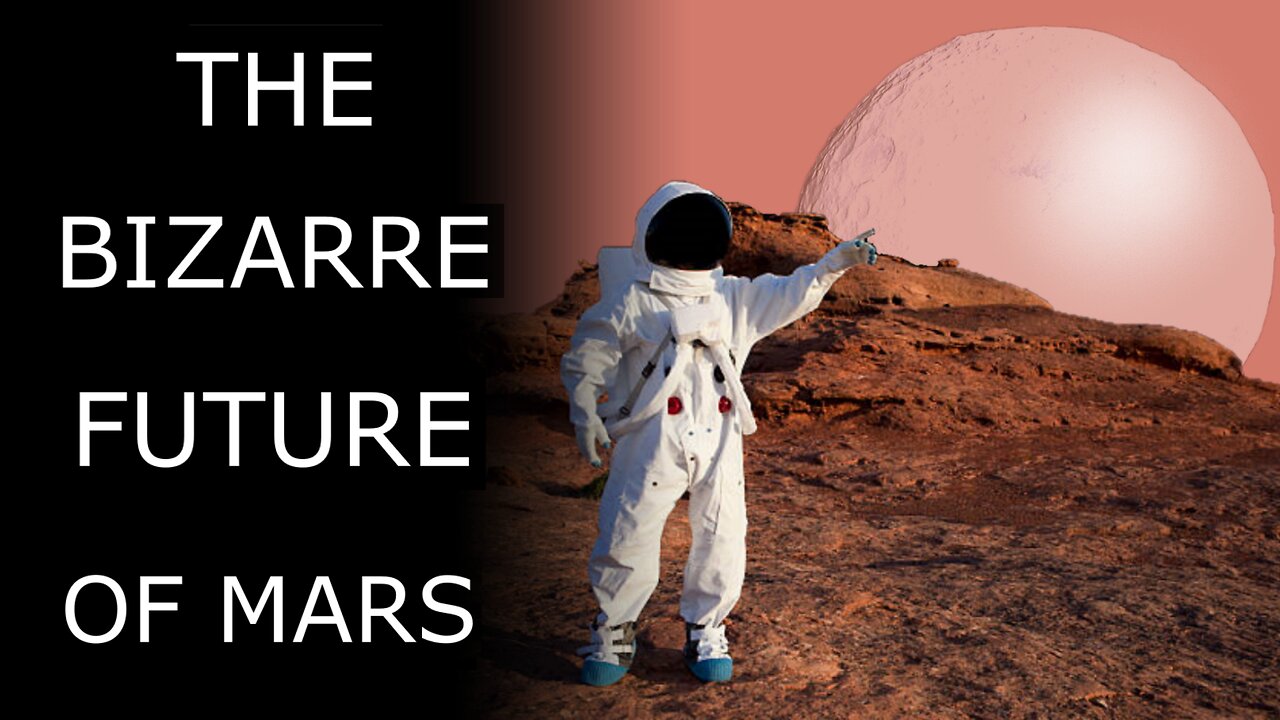Premium Only Content

🌑 CERES in the Sky of MARS Will Make Our Full MOON Seem PATHETIC 🌑
Terraforming Mars is a concept that has fascinated scientists, engineers, and science fiction enthusiasts alike. The idea involves transforming the Martian environment to make it more Earth-like, potentially allowing for human habitation. While many proposals exist, some of the wilder ideas push the boundaries of current scientific understanding and engineering capabilities. Below are several of these unconventional concepts.
1. Moving Ceres into Orbit Around Mars
One of the most audacious ideas involves relocating Ceres, a dwarf planet located in the asteroid belt between Mars and Jupiter, into orbit around Mars. This would theoretically provide a source of water and other resources essential for terraforming efforts. The process would require advanced propulsion technology capable of altering Ceres’ trajectory without breaking it apart or causing catastrophic impacts.
The benefits of this approach include:
Water Supply: Ceres contains a significant amount of water ice, which could be used to create a thicker atmosphere on Mars or support human colonization.
Resource Availability: Besides water, Ceres has various minerals that could be mined for construction and life-support systems.
However, the challenges are immense:
Energy Requirements: The energy needed to move such a massive body is currently beyond our technological capabilities.
Orbital Stability: Ensuring that Ceres remains in a stable orbit around Mars without colliding with it or being ejected into space poses significant risks.
2. Giant Mirrors in Space
Another wild idea is to deploy giant mirrors in space to reflect sunlight onto the Martian surface. This could help warm the planet enough to melt polar ice caps and release carbon dioxide (CO2), thickening the atmosphere and potentially leading to a greenhouse effect.
Key considerations include:
Scale: The size of these mirrors would need to be enormous—potentially kilometers across—to have any meaningful impact on Martian temperatures.
Material Durability: The materials used must withstand harsh space conditions while maintaining their reflective properties over long periods.
This method could gradually increase temperatures on Mars but would require extensive resources and international cooperation for deployment.
3. Genetically Engineered Organisms
Using genetically engineered organisms is another radical approach to terraforming Mars. Scientists propose creating microbes or plants that can survive in Martian conditions and perform photosynthesis using CO2 while producing oxygen as a byproduct.
Advantages include:
Biological Adaptation: These organisms could gradually alter the Martian atmosphere by increasing oxygen levels.
Sustainability: Once established, these life forms could create ecosystems that support further biological diversity.
Challenges involve:
Ethical Concerns: Introducing Earth life forms into an alien ecosystem raises ethical questions about contamination and ecological balance.
Survivability: Engineering organisms that can withstand extreme cold, radiation, and low pressure is currently speculative.
4. Nuclear Bombs for Atmospheric Release
A particularly controversial idea involves detonating nuclear devices at strategic locations on Mars to release CO2 trapped in its polar ice caps or subsurface layers. This sudden release could theoretically thicken the atmosphere quickly enough to initiate warming trends.
Considerations include:
Immediate Impact vs Long-term Effects: While this might produce rapid changes, it’s unclear whether such an approach would lead to sustainable atmospheric conditions.
Radiation Risks: The fallout from nuclear detonations poses risks not only for potential future inhabitants but also for any existing Martian ecosystems (if they exist).
This method raises significant ethical concerns regarding planetary protection protocols established by international agreements like the Outer Space Treaty.
5. Importing Ammonia from Other Celestial Bodies
Another intriguing idea is importing ammonia from other celestial bodies (like comets) to increase nitrogen levels in the Martian atmosphere. Nitrogen is essential for creating a breathable atmosphere similar to Earth’s.
Benefits include:
Atmospheric Enrichment: Ammonia can help create a more balanced atmosphere conducive to supporting life.
100% of Rumble Views
AND CHANNEL REVENUE
Go To Private MOON Mission!
https://rumble.com/user/WhatsNextVids
Subscribe:
https://www.youtube.com/@TheBetterNASAProject
Patreon:
https://www.patreon.com/user?u=37594401
Buy Me A Coffee:
https://www.buymeacoffee.com/whats.next
Donate With Cash App:
https://cash.app/$YTpayments
X/Twitter:
https://x.com/WhatsNe75388303
-
 LIVE
LIVE
Glenn Greenwald
4 hours agoGlenn Takes Your Questions on Censorship, Epstein, and More; DNC Rejects Embargo of Weapons to Israel with Journalist Dave Weigel | SYSTEM UPDATE #505
9,779 watching -
 LIVE
LIVE
Barry Cunningham
1 hour agoLISA COOK | ADAM SCHIFF | LETITIA JAMES | ARE THEY BEING SACRIFICED BY THE DEEP STATE?
2,791 watching -
 LIVE
LIVE
MattMorseTV
1 hour ago $1.22 earned🔴Trump just SHATTERED the PROJECTIONS.🔴
645 watching -
 8:00:13
8:00:13
Dr Disrespect
9 hours ago🔴LIVE - DR DISRESPECT - GEARS RELOADED GLOBAL LAUNCH - CRUSHING LOCUST
87.4K12 -
 LIVE
LIVE
SpartakusLIVE
5 hours ago$20,000 Hide and Seek Tourney w/ Stonemountain64 || #1 Rat wins the BIG CHEESE
344 watching -
 1:06:27
1:06:27
BonginoReport
3 hours agoBig Bad JB Threatens Trump! - Nightly Scroll w/ Hayley Caronia (Ep.120) - 08/26/2025
81.3K36 -
 1:02:26
1:02:26
Kim Iversen
3 hours agoIran Rejects Nuclear ‘Spy’ Inspectors — War Next?
28.6K73 -
 DVR
DVR
StoneMountain64
7 hours agoWARZONE LEGEND RETURNS. GHILLIE SUIT $20k TOURNEY.
50.7K3 -
 1:06:33
1:06:33
TheCrucible
3 hours agoThe Extravaganza! EP: 27 with Guest Host: Rob Noerr (8/26/25)
21.1K3 -
 DVR
DVR
GloryJean
10 hours agoHide & Seek Tournament w/ Spartakus, StoneMountain64 & Stevie
11.3K